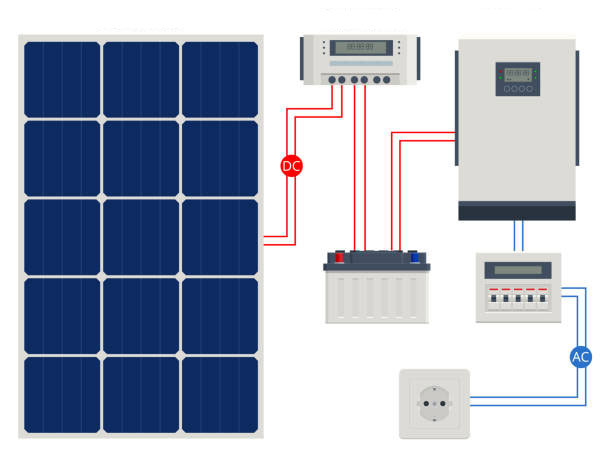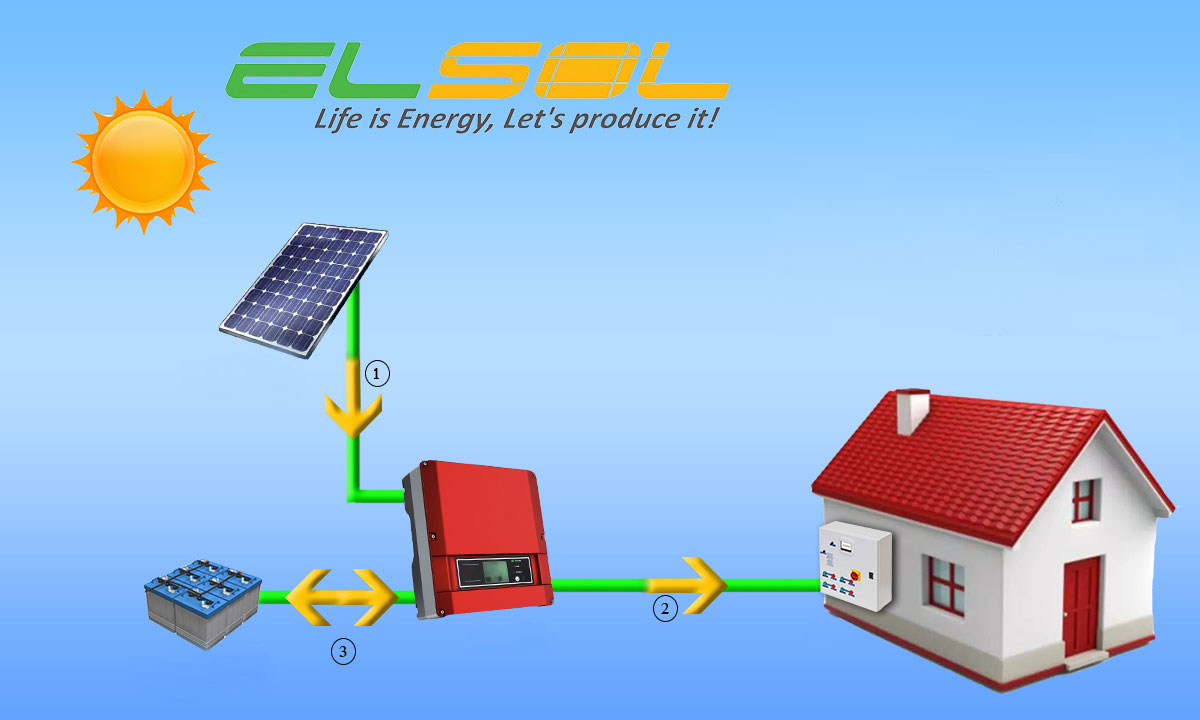What components does a photovoltaic system consist of and how does it work?
A photovoltaic system, also known as a solar system, is an energy system that converts sunlight into electricity. This is the so-called photovoltaic effect or PV effect. It consists of various components: solar panels, inverter, controller, rechargeable battery, electricity meter, wiring and other electrical accessories. Depending on whether it is autonomous, mains or combined, the solar system turns some of the components on or off, but the basic operating principles are the same.
Due to their silent functioning, without emission, they have established themselves on the energy market and more and more companies, homes and farms prefer them as a source of electricity.

The PV system – components
Operating principles of photovoltaic system types
Autonomous PV System or OFF GRID System
These PV systems use only the electricity they produce and are not connected to the grid. They include batteries to store the produced energy to ensure a continuous supply of electricity during the dark of the day.
How does the Off Grid system work?

Автономните системи намират приложение за обекти, които се намират на отдалечени места, без връзка с електропреносна мрежа: вили, къщи, помпени системи, каравани и други. Цената на Off Grid PV системите е най-висока, заради нуждата от батерия.
Grid PV System or ON-GRID system
An example of grid solar systems are all photovoltaic parks that are built to sell the electricity produced to electricity distribution companies. Therefore, there is no need for a battery.
The three main components in this type of solar system are: solar panels, inverter and electricity meter.
The principle of operation is similar. During daylight hours, solar panels produce electricity, it is converted from the inverter and directly supplied to the power grid.

Combined PV systems
This type of solar systems are built for household or business users with high electricity consumption – rooftop solar systems for business or solar systems for the home. They produce electricity and use it for their own needs, and when there is a shortage, they consume electricity from the electricity grid. It is advisable to install a battery to store the produced energy when there is no consumption.
How does the combined PV system work?

Combined photovoltaic systems with electricity sales
These systems have all the advantages of the other types of photovoltaic installations. Includes all the above components: solar panels, controller, inverter, electricity meter.
The basic principle of operation is no different. The electricity produced is used for its own needs. When it is not enough, the system takes electricity from the electricity grid, and if it is too much, it goes for sale to the supplier, with whom it is necessary to conclude a sales contract in advance.
* Here it is important to note that as much electricity can be sold as the connected power of the system.
You have a project for us?
Contact us for more information about your specific project. If you have any questions, do not hesitate to contact us. We will give you an optimal solution according to the specifics of your project.

